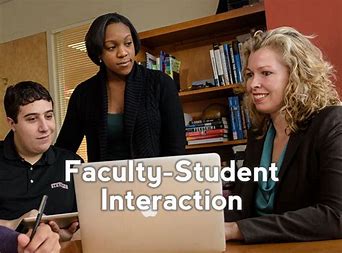For as tedious as it is to force reflection for my Individual Development Plan, I do find myself reflecting beyond the IDP on ways to offer improved experiences for students in the classroom. A few months ago, I signed up to join other faculty at one of Dr. Terry’s Student Success Listening Sessions. That day is fast approaching. Being the good boy scout that I am (actually I’m a country boy and participated in 4-H), I wanted to prepare my talking points to the four questions posed for discussion. One of the questions is: “what is the best way to achieve student success?”. (If I could, I would insert a ten-minute pause here as my mind pondered that question yet again.) I am sure if one asked 100 people that question, one would get 100 different answers. But no matter what answer each person gives, I hope that all faculty can agree that we want an actively engaged student body in the classroom. In fact, my answer would be student engagement is the best way to achieve student success. As a nascent educator, I thought I was engaging the students by introducing active learning activities in the classroom. As a slightly more experienced educator, I now know that active learning is only half the battle. My formal educational background includes a bachelors in business, a masters in business, and a PhD in business. Although this makes me a content-rich instructor, it does not make an expert educator. Therefore, I search for resources that provide insight into teaching and learning. One of my favorites is Student Engagement Techniques: A Handbook for College Faculty by E. Barkley. Barkley argues that students are only engaged when motivation and active learning overlap.

I can do learning activities all day long, but motivating students is the difficult part. Motivation is internal. Every person has their own incentives for being motivated to learn. How can one determine what motivates 125 students every semester? No worries. There are some highly-researched theories that might help educators motivate students. This is one area where my business education background might be helpful. Any student of basic management theory has studied employee motivation. A modern theory of employee motivation is Vroom’s Expectancy Theory. Expectancy Theory suggests that employees are motivated to perform when they value the reward to be received for performing well and there is a reasonable expectation that the reward can be achieved. This same theory has been applied to students in an educational setting (Becker, n.d.). Becker posits that in an educational setting, expectancy is the degree to which students expect to be able to learn successfully if they apply themselves, thus expecting to get whatever rewards that successful performance will bring. Value is the degree to which students value those rewards as well as the opportunity to engage in the processes involved in carrying out the learning itself. Although motivation is internal and specific to each student, faculty do have direct control over emphasizing and providing the expectancy and value responsible for student motivation.
At the risk of this blog post sounding like a dissertation chapter, I will stop discussing theory and provide practical examples of how faculty can provide rewards that students value. The Center for Teaching at Vanderbilt University provides the following examples. As I read these, I tally how many I am already using and ponder how to incorporate the others. I encourage all to do the same.
Deliver your presentations with energy and enthusiasm. As a display of your motivation, your passion motivates your students. Make the course personal, showing why you are interested in the material. (relatedness)
Get to know your students. You will be able to better tailor your instruction to the students’ backgrounds, and your personal interest in them will inspire their personal loyalty to you. (relatedness)
Use examples freely. Many students want to be shown why a concept is useful before they want to study it further. Inform students about how your course prepares students for future opportunities. (relatedness)
Set realistic performance goals. Design assignments that are appropriately challenging in view of the experience and aptitude of the class. (mastery)
Be free with praise and constructive in criticism. Negative comments should pertain to particular performances, not the performer. Offer nonjudgmental feedback on students’ work, stress opportunities to improve, and look for ways to stimulate advancement. (mastery)
Give students as much control over their own education as possible. Let students choose paper and project topics that interest them. Assess them in a variety of ways (tests, papers, projects, presentations, etc.) to give students more control over how they show their understanding to you. (autonomy)
I found it interesting that as I read through these suggestions that each of them was practical advice on how to achieve the three components of self-determination theory—relatedness, mastery, and autonomy. (I labeled each.) Self-determination theory is the basis of the Reimagine Teaching and Learning project that GCC is about to commence. I suspect those of us who may participate in that program will learn, discover, and implement more strategies to achieve student engagement through motivation and active learning.
Becker, B. (n.d.) A new meta-model of student engagement: The roles of student motivation and active learning. Retrieved from https://www.brettbecker.com/wp-content/uploads/2015/05/IICE-13-_Becker_-419_Camera-Ready.pdf



